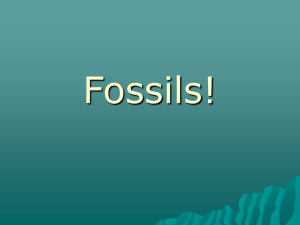Fossil Notes Taking Sheet
advertisement
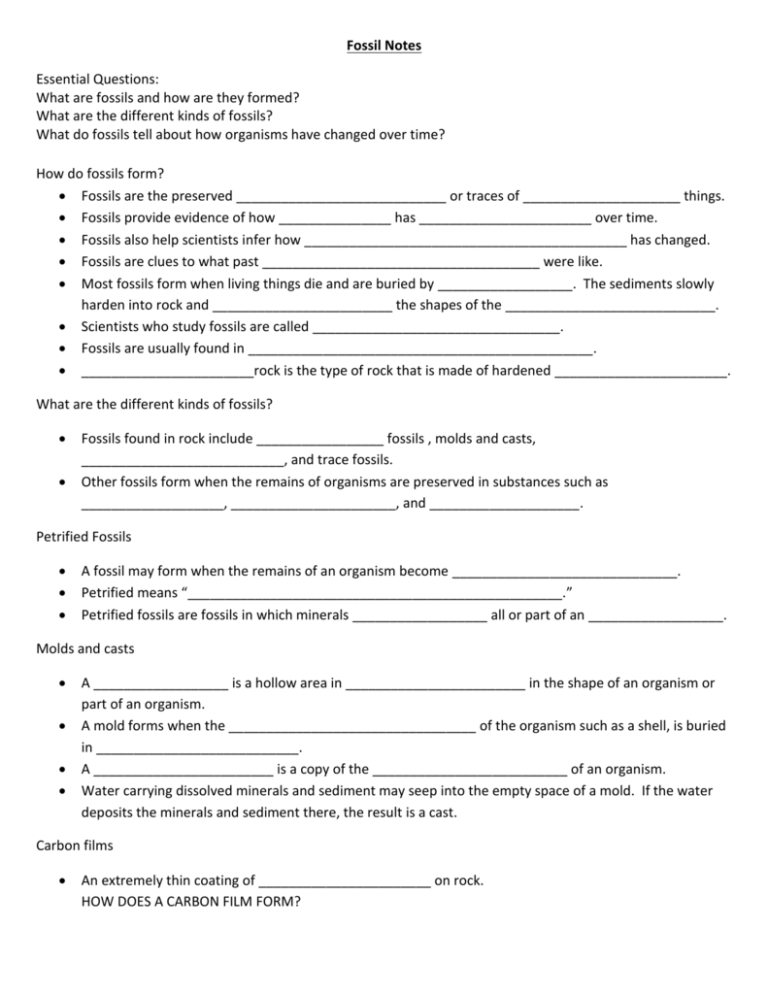
Fossil Notes Essential Questions: What are fossils and how are they formed? What are the different kinds of fossils? What do fossils tell about how organisms have changed over time? How do fossils form? Fossils are the preserved ____________________________ or traces of _____________________ things. Fossils provide evidence of how _______________ has _______________________ over time. Fossils also help scientists infer how ___________________________________________ has changed. Fossils are clues to what past _____________________________________ were like. Most fossils form when living things die and are buried by __________________. The sediments slowly harden into rock and ________________________ the shapes of the ____________________________. Scientists who study fossils are called _________________________________. Fossils are usually found in ______________________________________________. _______________________rock is the type of rock that is made of hardened _______________________. What are the different kinds of fossils? Fossils found in rock include _________________ fossils , molds and casts, ___________________________, and trace fossils. Other fossils form when the remains of organisms are preserved in substances such as ___________________, ______________________, and ____________________. Petrified Fossils A fossil may form when the remains of an organism become ______________________________. Petrified means “__________________________________________________.” Petrified fossils are fossils in which minerals __________________ all or part of an __________________. Molds and casts A __________________ is a hollow area in ________________________ in the shape of an organism or part of an organism. A mold forms when the _________________________________ of the organism such as a shell, is buried in ___________________________. A ________________________ is a copy of the __________________________ of an organism. Water carrying dissolved minerals and sediment may seep into the empty space of a mold. If the water deposits the minerals and sediment there, the result is a cast. Carbon films An extremely thin coating of _______________________ on rock. HOW DOES A CARBON FILM FORM? When sediment _______________________ an organism, some of the materials that make up the organism can become ____________________________. These gases escape from the sediment, leaving ______________________ behind. Eventually, only a thin film of carbon remains. Trace fossils Trace fossils provide ___________________________ of the __________________ of ancient organisms. A fossilized ________________________________ is on example of a trace fossil. Other examples of trace fossils include the ____________________ that animals followed or the ________________________ that they lived in. Preserved Remains Some processes ________________________ the remains of organisms with little or no change. Some remains are preserved when organisms become trapped in _______________. Ancient organisms also have been preserved in ____________. Amber is the hardened resin, or sap, of _________________________________________. _____________________________ is another way in which remains can be preserved. What do fossils tell about how organisms have changed over time? The ___________________________ provides evidence about the history of life on Earth. The fossil record also shows that different groups of organisms have changed over time. The fossil record reveals a surprising fact: _____________________________________________. The fossil record shows that life on Earth has ________________________, or changed. The fossil record provides evidence to support the theory of _____________________________. Evolution is the gradual __________________ in living things over long ___________________________. The fossil record shows that _____________________ of types of organisms have ___________________. But many others have become ___________________________. A type of organism is extinct if it no longer ______________ and will never again live on Earth. _______________________________ use fossils to build up a picture of Earth’s environments in the past. Fossils also provide evidence of Earth’s ________________ in the past. Scientists can use fossils to learn about changes in Earth’s _________________________________. In Summary Most fossils form when living things die and are quickly ________________________ by sediment, which eventually hardens and preserves parts of the organisms. The major kinds of ____________________ include petrified remains, molds, casts, carbon films, trace fossils, and preserved remains. The fossil record shows that many different organisms have lived on Earth at ______________________ times and that groups of organisms have changed __________________________________.
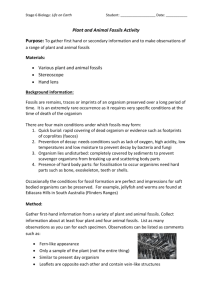



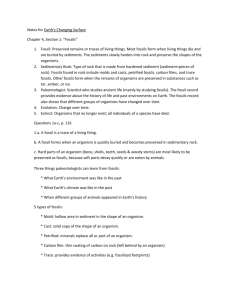
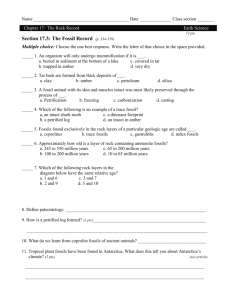
![F3-4 Study Guide for QUIZ [1/28/2016]](http://s3.studylib.net/store/data/006814899_1-56a576b1a51c0f876f28a8da0f15de89-300x300.png)
